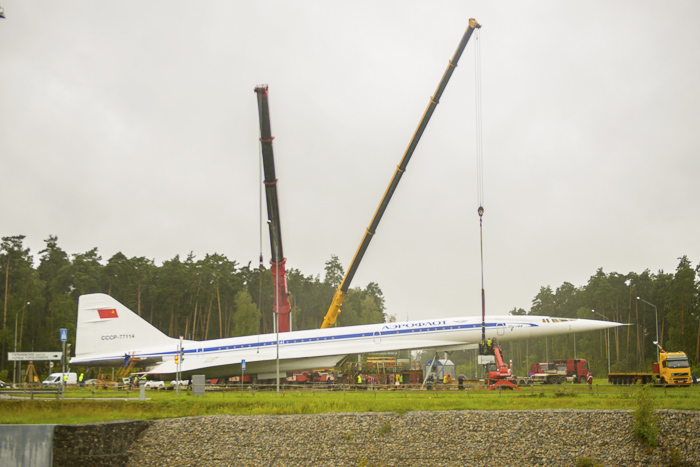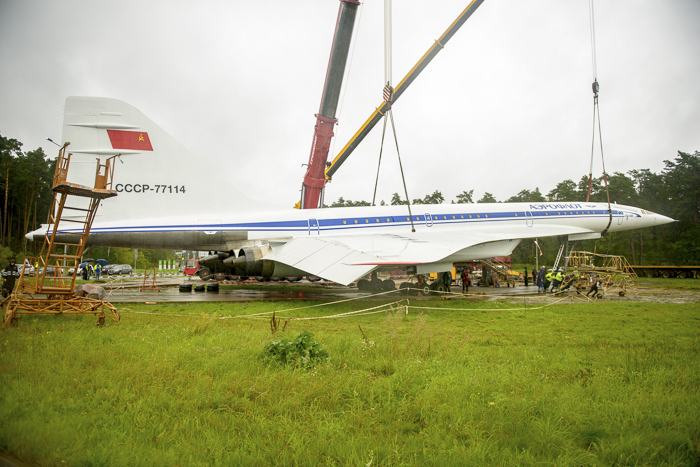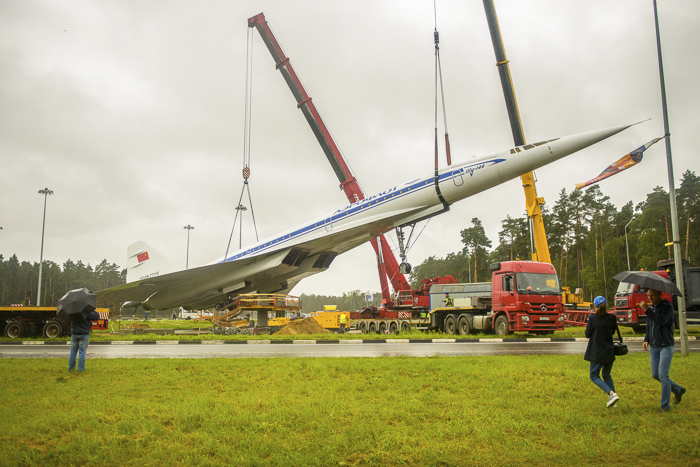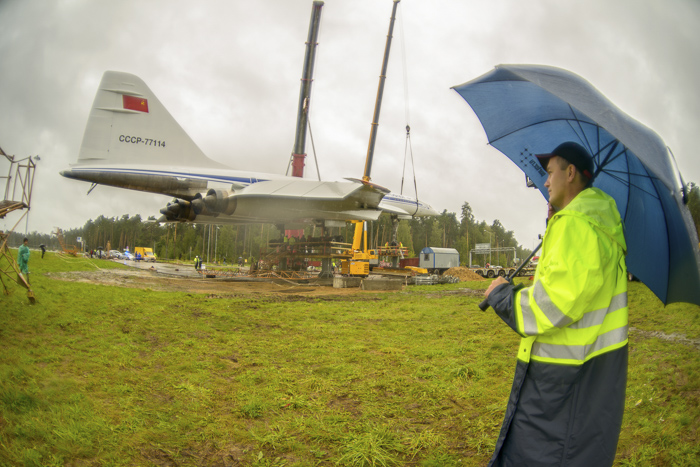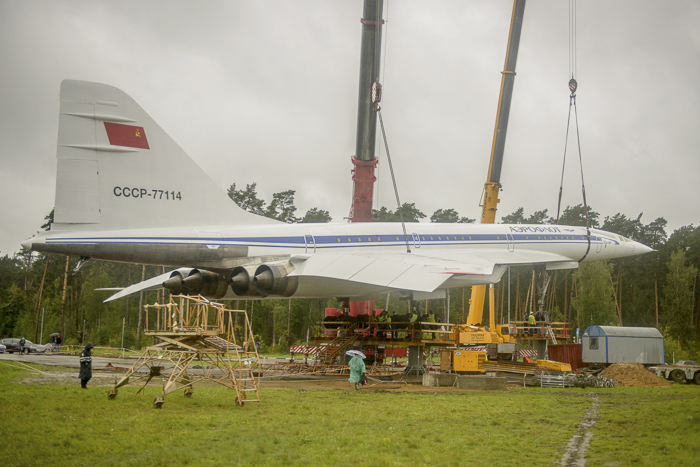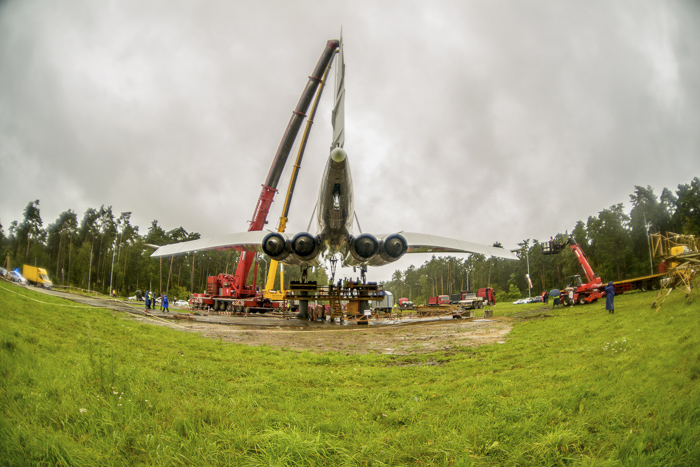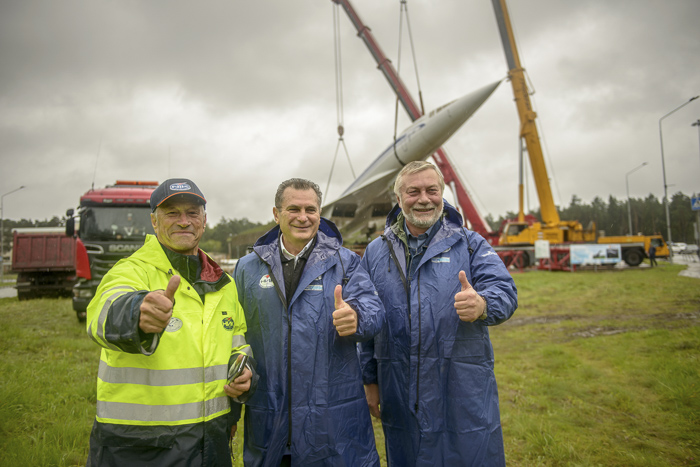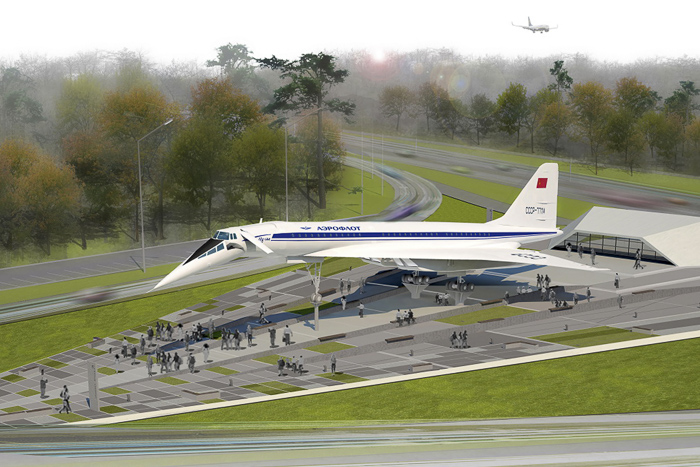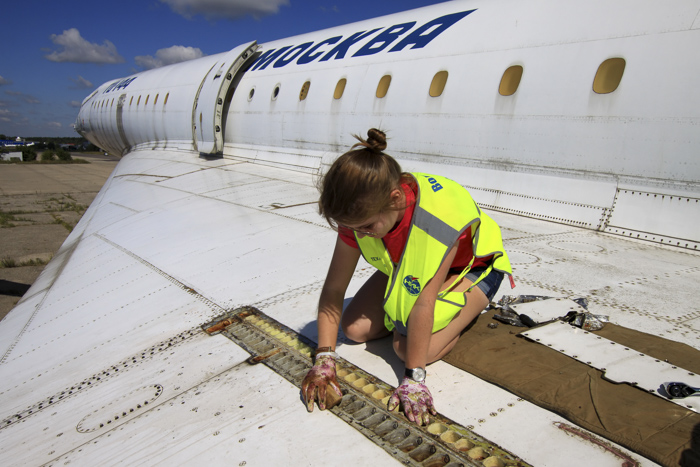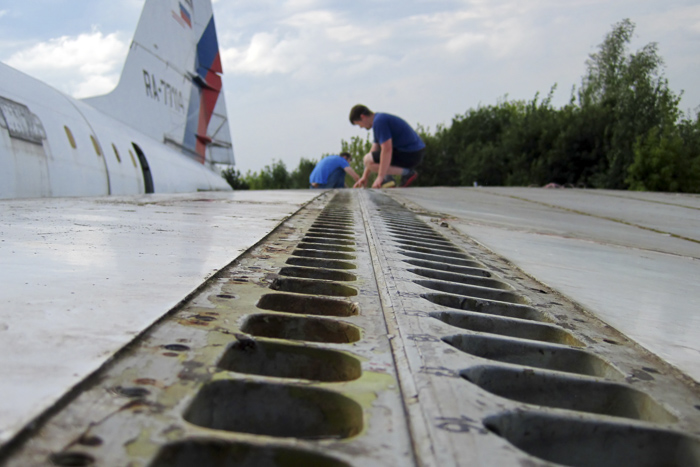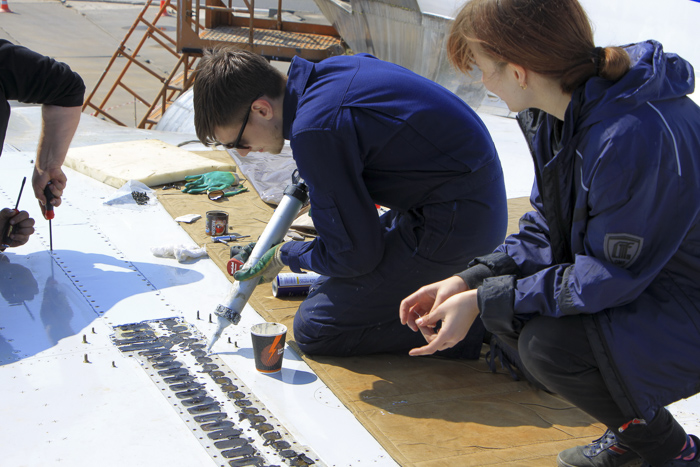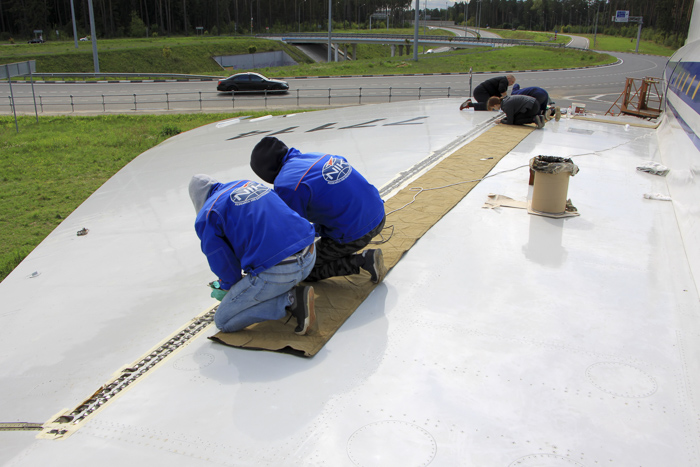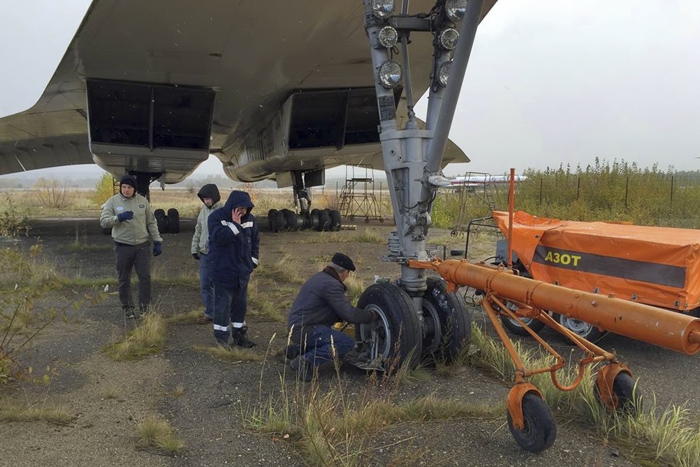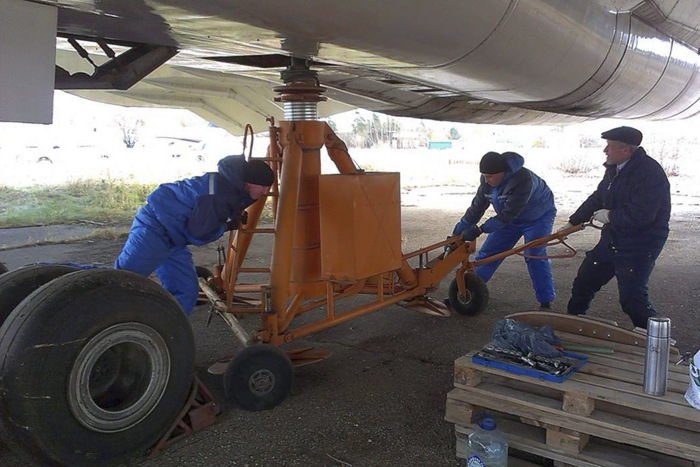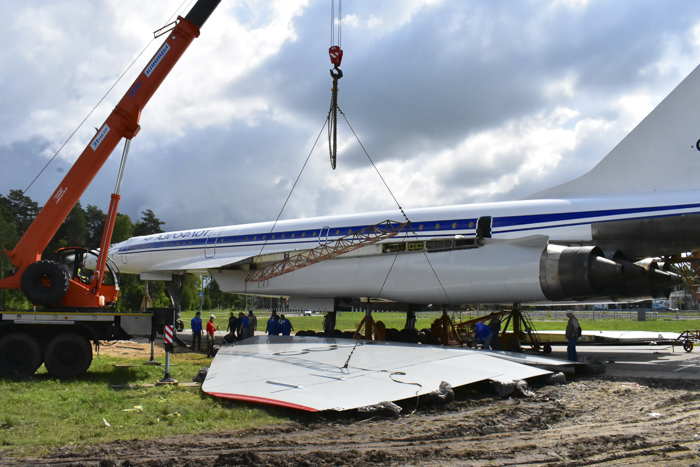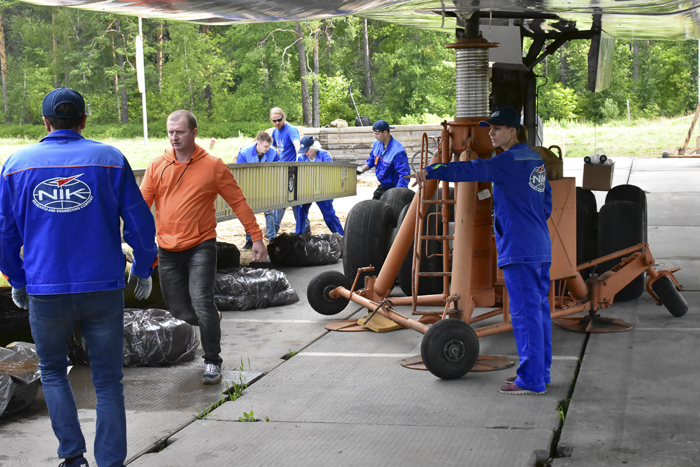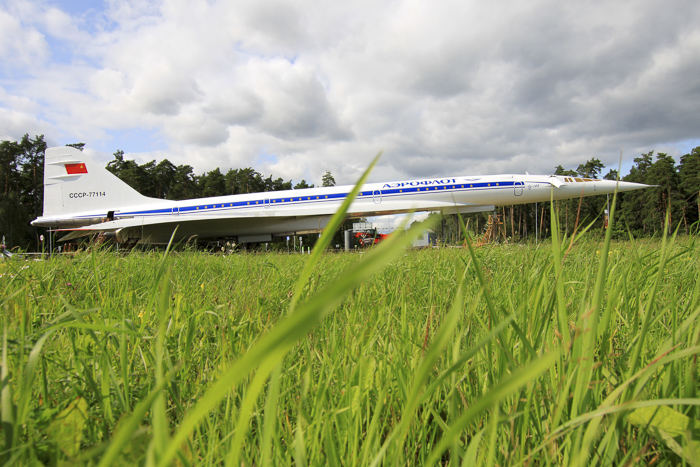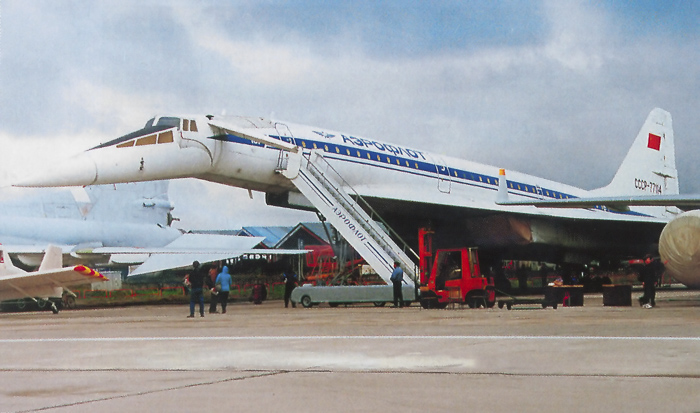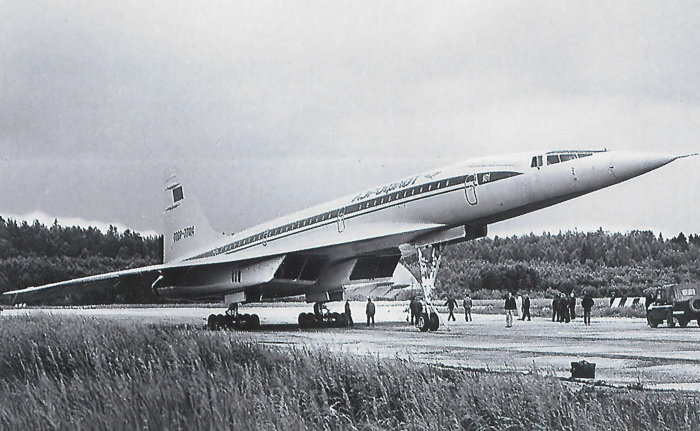The opening ceremony of the monument will take place on the Day of Zhukovsky, which in 2019 falls on August 18. Now, a simple citizen can enjoy beautiful views and take a selfie against the backdrop of an aircraft.
Reconstruction timeline
For a long time, the aircraft was located on the territory of the Gromov Flight Research Institute in Zhukovsky. At the very beginning, there were many ideas for installing a monument in the city. It was proposed to establish the aircraft as an attraction both on the territory of the flight research institute and on the square in front of the TsAGI main building in Zhukovsky. The idea was initiated by the honoured test pilot of the Russian Federation Valery Fedorovich Vanshin, and later the head of the city, Andrei Petrovich Voytyuk, also connected to it.
After long negotiations, it turned out that the plane was generally sold to a private company, which later planned to resell the aircraft in the United States. It was not possible to organise the stage, since the engines (by the way, installed from the Tu-160) belonged to the military department. And only in December 2014 the plane was transferred for free use, and also put on the balance of the city.
To implement the project of installing the Tu-144 as a monument, in April 2015, the public organisation Charity Fund “Legends of Aviation” was created. Also, employees of the Scientific and Engineering Company "NIK" took an active part in the preparatory, restoration and engineering activities related to the installation of the aircraft on a pedestal.

Later, an assessment was made of the scale of internal and external work on the aircraft, as well as the procedure for their implementation. At the first stage, the main measures included the dismantling of the measuring equipment installed in the cabin of the flying laboratory, the cleaning of the aerodynamic surfaces of wires and measuring devices that were not included in the initial appearance of the aircraft. Engineers also appreciated the ability to undock the wing consoles for transportation.
In May 2015, work began in the cabin, in particular, racks with equipment were dismantled. All wires were disconnected strictly by connectors - without wire cutters. In addition, racks were marked that they decided to leave on board as exhibits. A statement of the cockpit and the cabin was compiled, the missing instruments and equipment for further recovery were identified.
In the summer, aircraft restorers from Monino joined in with NIK employees, and work began on cleaning the surface of the aircraft from measuring devices and wires. An open panel covering the bolts of the detachable part of the wing was also cleaned and the possibility of parsing was evaluated.
In the fall of 2015, the panels of the lower wing surface were removed, hiding the fixing bolts of the detachable part, for analysis. The internal design of the engine nacelles and the airframe was also checked.
The board drove the first 5 meters in October 2015. By the way, the first time it didn’t work, because the aircraft ended up in small holes due to its own weight.
On October 22, 2015, hydraulic lifts that were made specifically for the Tu-144 were tested. The plane was lifted, and experts conducted an analysis of the landing gear.
Engineers continued their further work only a year later. The preparation of wing consoles for undocking has begun. All fasteners were cleaned and the bolts numbered, subsequently unscrewed. A special shield was also prepared, on which the bolts were placed according to the numbering. Several fasteners were left in place to fix the wing until transportation.
To develop the architectural concept of the future monument, the Aviation Legends Charitable Foundation held a competition among several design organisations. Geodetic and geological work was also carried out in the area defined for the installation of the side. NIK engineers prepared design documentation for the production of metal supports under the aircraft chassis.
True, for the implementation of such a large-scale project, some enthusiasts and aviation enthusiasts were not enough. The work was temporarily suspended due to administrative difficulties. And only in June 2019 they were able to continue when the work on filling the foundation began. In parallel with this, the Tu-144 was painted in the colours of Aeroflot. The first livery returned to the plane.
July 17, 2019 Tu-144LL with undocked wing consoles was removed from the territory of the Gromov Flight Research Institute and transported to the installation site. After 2 days, the aircraft was fixed on hydraulic lifts.
On July 21, 2019, the first stage of docking of wing consoles was successfully completed. Detachable parts were replaced and secured to the main bolts. After which the aircraft was levelled.
On July 23, 2019, the second stage of the installation of detachable wing parts began - sealing joints. To do this, all fasteners were checked, finally tightened, and the space around them was cleaned and dried. Then, the installation locations of the fasteners began to be filled with a special composition, eliminating the ingress of moisture.
After that, all joints were mothballed with special panels. The work took a lot of time, since each console has 273 attachment points along the upper part of the wing. At the same time, the interior of the aircraft was investigated to detect stagnation of water and the creation of drainage holes.
On July 25, 2019, experts from Kazan began installing fastenings for lifting the aircraft onto a pedestal, and panels and hatches were sealed on the upper surface of the wing. On July 28, 2019, the first support on which the aircraft was installed was delivered to the place of installation of the monument.
A bit from the history of the Tu-144LL aircraft registration number 77114
The aircraft was built at the Voronezh Aviation Plant in 1981 in the modification of the Tu-144D with serial number 08-2. During registration, the aircraft was assigned the aircraft number USSR-77114. He first took off on April 14, 1981. After completion of factory tests, the aircraft took part in the final stage of state testing of the Tu-144D modification.
In July 1983, a series of world records was set on it. On July 13, when flying a closed route with a length of 1000 km with a load of 30,000 kg, a world speed record of 2031.5 km / h was set, and on July 20 a record of speed and altitude along a closed route of 2,000 km with a load of 30,000 kg was set. An average flight speed of 2012.2 km / h and an altitude of 18,200 m was obtained. Flights were performed at the Kipelovo airbase in the Vologda Oblast. When setting records, the aircraft had the code "101".
From 1986 to 1988, the Tu-144D was equipped with scientific research equipment for conducting a study of the radiation situation in the upper atmosphere in the interests of the institute of biomedical problems. February 27, 1990 was the last flight of the aircraft in the version of the Tu-144D. At this point, his raid was 82 hours and 40 minutes, of which 28 hours were supersonic.
In 1993, the aircraft was exhibited at the static exposition of the MAKS airshow.


On June 17, 1994, a contract was signed with NASA "On modifications of the Tu-144D aircraft and a set of studies in the interests of creating a supersonic passenger aircraft of the 2nd generation." Tu-144D was converted into a flying laboratory Tu-144LL.
Instead of the RD-36-51A engines, NK-32-1 were installed, used on the Tu-160 strategic bombers. The changes affected engine nacelles and air intakes. The wing was strengthened, the fuel, fire and other systems were improved, in addition, the wing mechanisation was changed.
The solemn roll-out of the Tu-144LL with tail number RA-77114 took place on March 17, 1996 in the city of Zhukovsky, and on November 29, 1996 the aircraft first took off.
The flight test program consisted of two parts, in the second of which the aircraft received its own name "Moscow". From 1996 to 1999, the Tu-144LL performed 27 flights and flew 57 h 32 min, of which 12 h 32 min at supersonic. In four flights, US test pilots took part to qualitatively evaluate the characteristics of a supersonic aircraft. On April 19, 1999, the aircraft completed its final flight in the history of the Tu-144.


On the territory of the Gromov Flight & Research Institute survived another Tu-144 with number 15, which will be shown at MAKS-2019. The fate of this aircraft is just as complex and so far uncertain. We talked about this in our material back in 2006, “The Moment of Truth”.
Reference:
Tu-144 is a Soviet supersonic passenger aircraft developed at the Tupolev Design Bureau, manufactured in Voronezh. The first flight of the Tu-144 took place on December 31, 1968, that is, two months earlier than the supersonic passenger Concorde. Tu-144 is the first passenger airliner in history to overcome the sound barrier, this happened on June 5, 1969 at an altitude of 11,000 meters. However, the history of the aircraft ended quite quickly. In total, 16 Tu-144s were built in the USSR. In total, the Tu-144 completed 102 flights, of which 55 were passenger.





